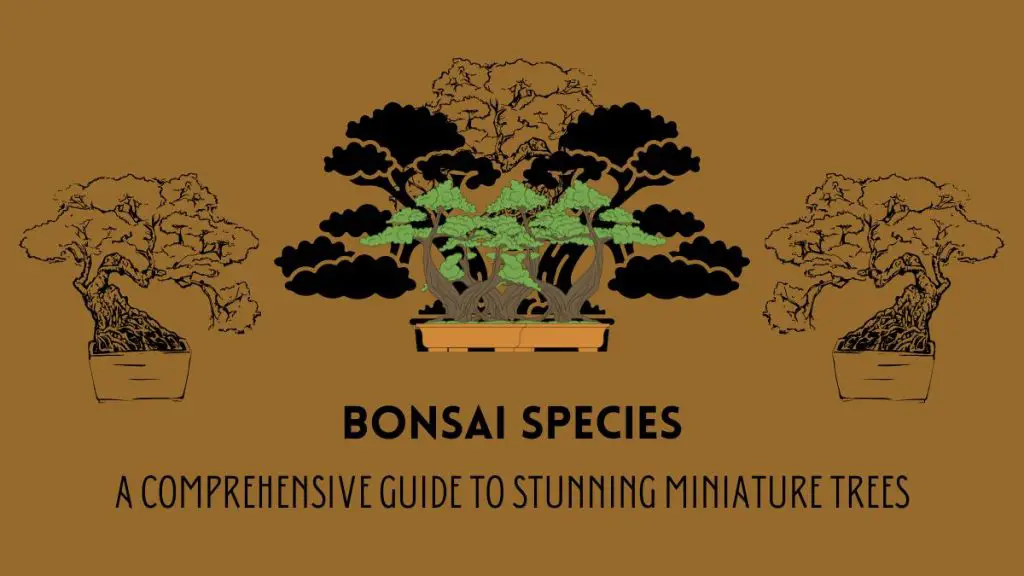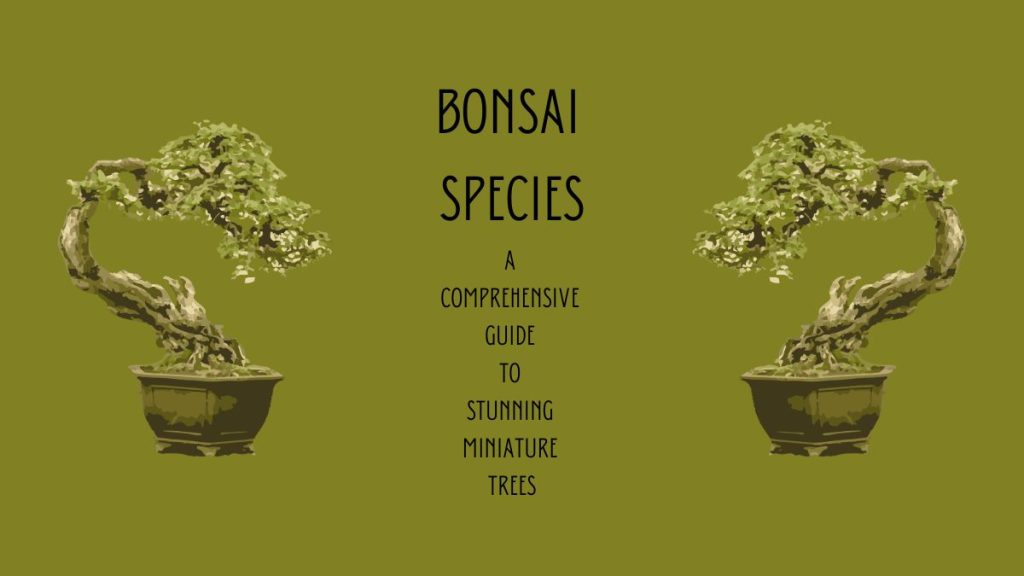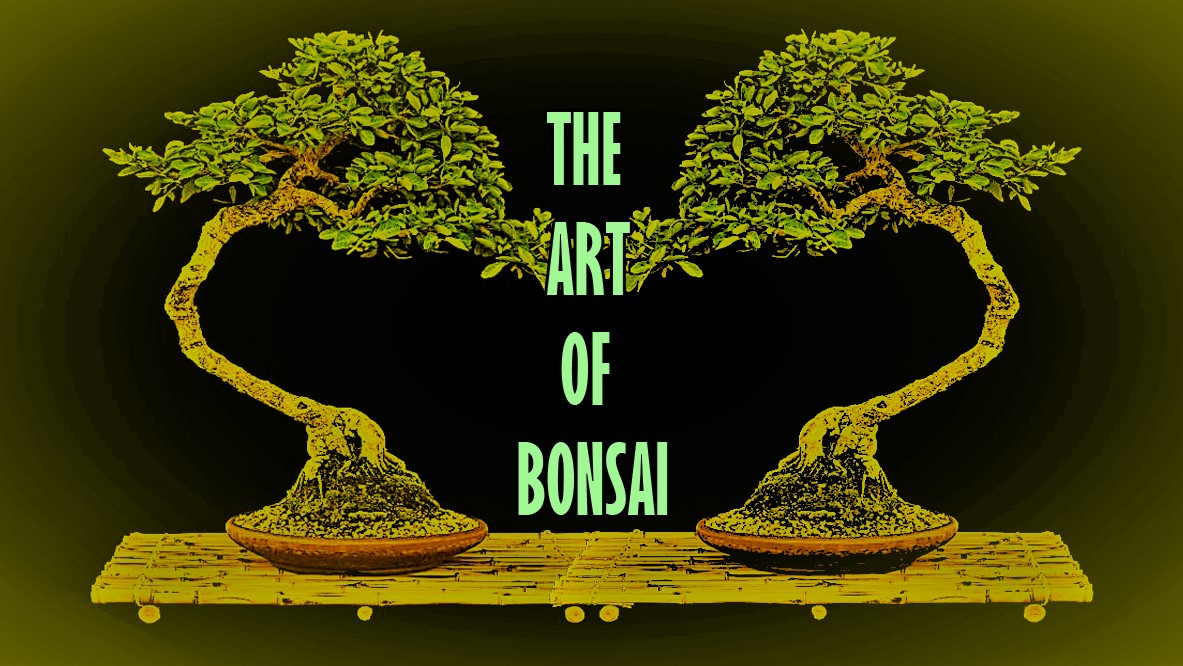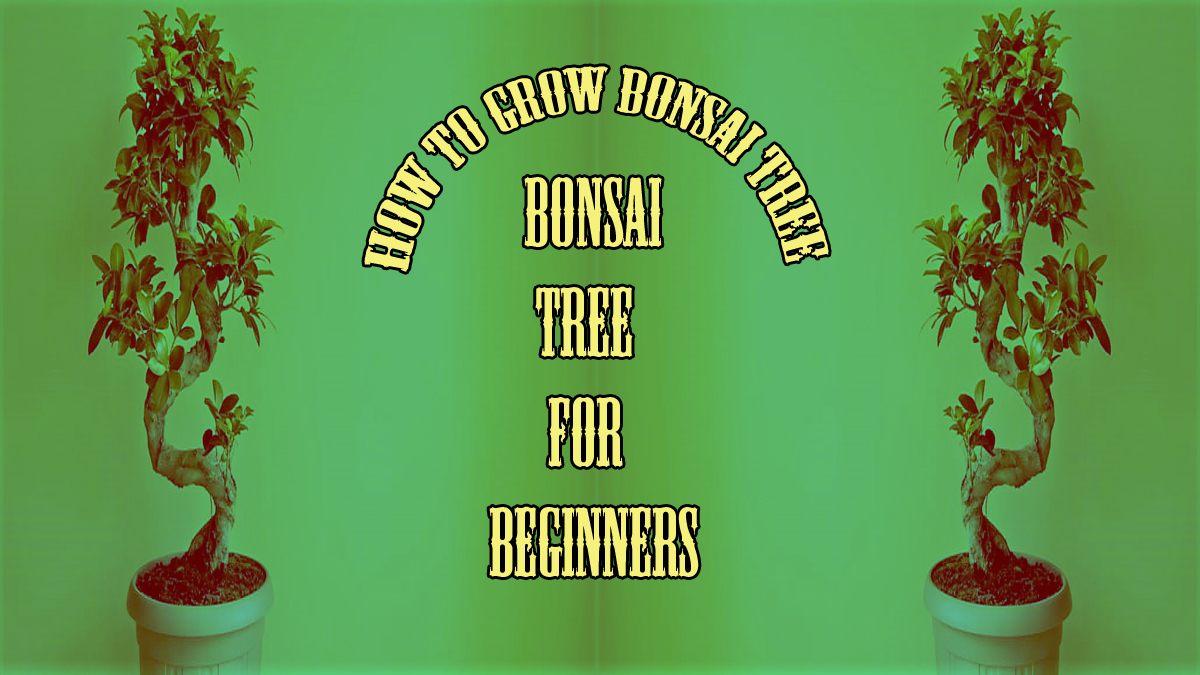Bonsai species include various types of trees and shrubs that are cultivated in miniature form. Popular species include Juniper, Pine, and Maple.
Bonsai is an ancient art form that originated in China and was later refined in Japan. It involves growing and shaping miniature trees in containers to create aesthetically pleasing and natural-looking forms. Popular bonsai species include Juniper, Pine, and Maple, each offering unique characteristics and growth patterns.
These species are chosen for their ability to thrive in small pots and respond well to pruning and training. Bonsai enthusiasts enjoy the challenge of maintaining these miniature trees, which can live for many years with proper care. Cultivating bonsai can be a rewarding and meditative hobby.
Related Article: Bonsai Styles: Master the Art of Miniature Tree Design

Related Article: Bonsai Pruning Techniques: Master the Art of Miniature Trees
Introduction To Bonsai Species
Bonsai is the art of growing miniature trees. It has been practiced for centuries. These trees are carefully pruned and trained to stay small. There are many species of bonsai. Each species has its unique charm.
History Of Bonsai
The history of bonsai dates back over a thousand years. Originating in China, it was known as “penjing”. The art then spread to Japan. In Japan, it evolved into the bonsai we know today. Samurai warriors and monks practiced bonsai. It became a symbol of peace and balance.
By the 19th century, bonsai reached the Western world. People admired the small trees. Today, bonsai is practiced globally. Each culture adds its touch to the art.
The Art Of Miniaturization
Miniaturization is key in bonsai. It involves careful pruning and shaping. Bonsai artists trim roots and branches. They also use wire to guide growth. The goal is to mimic full-sized trees.
Tools and techniques are essential. Artists use special scissors and wires. Regular care and attention are needed. Watering, sunlight, and soil quality are crucial. Each species has specific needs.
| Bonsai Species | Characteristics | Care Tips |
|---|---|---|
| Juniper | Evergreen, needle-like leaves | Needs full sun, well-drained soil |
| Ficus | Broad leaves, aerial roots | Prefers indirect light, moderate watering |
| Maple | Deciduous, bright foliage | Needs partial shade, regular watering |
- Juniper: Easy for beginners.
- Ficus: Great for indoors.
- Maple: Beautiful fall colors.
- Choose the right species.
- Understand its needs.
- Regularly prune and shape.
- Water and fertilize properly.

Credit: www.amazon.com
Related Article: Bonsai Soil Mix: Essential Ingredients for Healthy Growth
Popular Bonsai Trees
Many people love bonsai trees. They are small and beautiful. Let’s look at some popular bonsai trees.
Juniper Bonsai
The Juniper Bonsai is very famous. It is perfect for beginners. Juniper trees are evergreen. They have needle-like leaves. These trees look like mini forests.
Juniper Bonsai trees are easy to shape. They grow well in different styles. Here are some key points about Juniper Bonsai:
- Easy to care for
- Can be grown indoors or outdoors
- Thrives in bright light
- Needs well-drained soil
Ficus Bonsai
The Ficus Bonsai is another popular choice. It is known for its thick trunks and roots. Ficus trees are tropical. They have glossy leaves. These trees are very hardy.
Ficus Bonsai can be grown indoors. They are great for homes and offices. Here are some key points about Ficus Bonsai:
- Thrives in warm temperatures
- Needs regular watering
- Can be shaped easily
- Requires indirect sunlight

Related Article: Best Bonsai Pots: Elevate Your Miniature Trees with Style
Caring For Your Bonsai
Caring for your bonsai is both art and science. A bonsai tree needs attention and love. Proper care ensures it thrives and remains beautiful.
Watering Techniques
Watering your bonsai correctly is crucial. Overwatering or underwatering can harm the tree. Always check the soil moisture. Stick your finger 1 inch into the soil. If it feels dry, water the bonsai.
Use a watering can with a fine nozzle. This helps distribute water evenly. Water until it drains out of the pot’s bottom. This ensures the roots get enough moisture.
Consider the species of your bonsai. Some need more water, others less. Research your specific bonsai species for best results.
Pruning And Shaping
Pruning and shaping are vital for bonsai health and appearance. Regular pruning controls growth and maintains the desired shape. Use sharp, clean tools to prevent damage.
There are two types of pruning: structural and maintenance. Structural pruning is done in the early stages. It sets the basic shape of the bonsai. Maintenance pruning involves removing unwanted branches and leaves. This helps the tree stay healthy and attractive.
Wiring is another technique for shaping. Wrap wire around branches to direct their growth. Be gentle and avoid damaging the bark. Check the wire regularly and remove it if it starts to dig into the tree.
| Technique | Purpose |
|---|---|
| Watering | Ensures the tree gets enough moisture |
| Pruning | Controls growth and maintains shape |
| Wiring | Directs branch growth |
Caring for your bonsai requires patience and dedication. Follow these tips to keep your bonsai healthy and beautiful.
Credit: www.thespruce.com
Related Article: Are Bonsai Trees Hard to Take Care of? Debunking Myths
Indoor Vs Outdoor Bonsai
Bonsai trees are miniature trees that need special care. Choosing the right environment is important. Some bonsai species thrive indoors, while others prefer the outdoors. Understanding the best species for each setting ensures a healthy and beautiful bonsai.
Best Indoor Species
Indoor bonsai trees are perfect for homes and offices. They need stable temperatures and indirect sunlight. Here are some of the best indoor bonsai species:
- Ficus Bonsai: Easy to care for, with thick, waxy leaves.
- Chinese Elm: Has small, serrated leaves and a strong trunk.
- Jade Plant: Succulent with thick, glossy leaves.
- Hawaiian Umbrella: Compact and can tolerate low light.
These species are resilient and adapt well indoors.
Best Outdoor Species
Outdoor bonsai trees need more light and fresh air. They thrive in natural conditions. Here are some of the best outdoor bonsai species:
- Juniper Bonsai: Hardy and can withstand cold climates.
- Maple Bonsai: Beautiful fall colors with delicate leaves.
- Pine Bonsai: Classic look with needle-like leaves.
- Azalea Bonsai: Bright flowers and lush foliage.
These species grow best with direct sunlight and outdoor elements.
Common Bonsai Problems
Every bonsai owner encounters issues. These problems can harm your bonsai’s health and beauty. Understanding common bonsai problems helps in maintaining a healthy tree.
Pest Control
Pests are a major concern for bonsai enthusiasts. Aphids, spider mites, and scale insects are the most common pests.
- Aphids: These small insects suck sap from your bonsai.
- Spider Mites: These tiny pests cause yellowing of leaves.
- Scale Insects: These pests attach themselves to branches and leaves.
To control pests:
- Inspect your bonsai regularly.
- Use a gentle insecticidal soap.
- Introduce natural predators like ladybugs.
Disease Management
Bonsai trees are prone to various diseases. Fungal infections and root rot are common issues.
- Fungal Infections: These cause spots on leaves and bark.
- Root Rot: Overwatering leads to this disease.
To manage diseases:
- Ensure proper drainage for your bonsai.
- Remove infected parts immediately.
- Apply fungicides when necessary.
Maintaining a healthy bonsai requires vigilance. Regular checks and proper care keep your bonsai thriving.

Credit: www.kusamurabonsai.org
Related Article: How to Repot a Bonsai for Beginners: A Comprehensive Guide
Conclusion
Exploring various bonsai species opens up a world of beauty and tranquility. Each species offers unique characteristics and care needs. By choosing the right bonsai, you can create a stunning, miniature landscape. Dive into the art of bonsai and experience the joy of nurturing these living masterpieces.
Happy gardening!
Related Article: 14 Best Bonsai Tools To Make A Proper Bonsai
- Best Cordless Pruning Saw for Effortless Tree Trimming and Cutting - September 22, 2025
- Best Shovel for Digging: Top Heavy-Duty Picks for Garden and Outdoor Use - September 6, 2025
- Best Hedge Trimmers: Top Electric and Cordless Options for Precise Cutting - August 20, 2025




Pingback: Bonsai Styles: Master the Art of Miniature Tree Design - Dwell Gardens